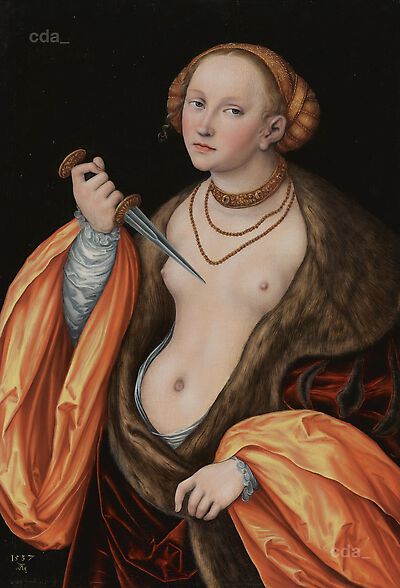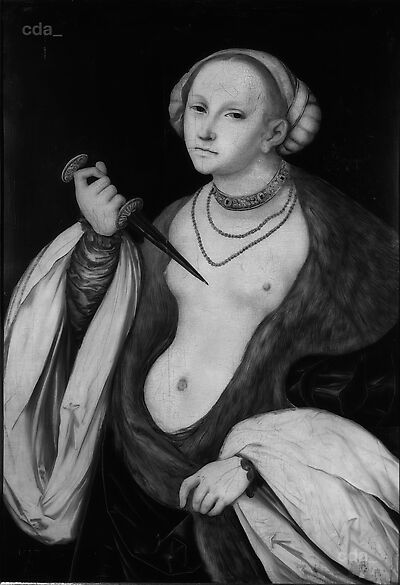- Attributions
-
Lucas Cranach the Elder
Lucas Cranach the Younger
Attributions
| Lucas Cranach the Elder | [Friedländer, Rosenberg 1979, 118, No. 240P] |
| Lucas Cranach the Younger | 'Lucas Cranach the Elder and Lucas Cranach the Younger' [Auct.Cat. Sotheby's New York in the Archive D. Koepplin, 2009] |
- Production date
- 1537
Production date
| 1537 | [dated] |
- Dimensions
- Maße Bildträger: 86,9 x 57,9 cm
Dimensions
Maße Bildträger: 86,9 x 57,9 cm
[Ausschnitt Aukt.Kat. Sotheby's New York im Archiv D. Koepplin, 2009]
Dimensions of support: 86.9 x 57.9 cm
[Auct.Cat. Sotheby's New York in the Archive D. Koepplin, 2009]
- Signature / Dating
Artist's insignia at the lower left: serpent (with dropped wings) and dated '1537'
Signature / Dating
Artist's insignia at the lower left: serpent (with dropped wings) and dated '1537'
- Owner
- Private Collection
- Repository
- Private Collection
- CDA ID
- PRIVATE_NONE-P159
- FR (1978) Nr.
- FR240P
- Persistent Link
- https://lucascranach.org/en/PRIVATE_NONE-P159/

